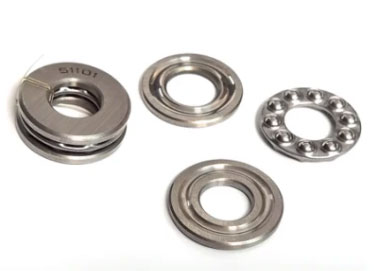Home / News / Understanding Thrust Ball Bearings: A Comprehensive Guide
Understanding Thrust Ball Bearings: A Comprehensive Guide
Introduction: Thrust ball bearings are an essential component of many types of machinery, including automobiles, industrial equipment, and heavy machinery. They are designed to handle axial loads and are particularly useful in applications where high speeds and heavy loads are involved. In this article, we will explore the basics of thrust ball bearings, including their construction, working principles, and applications.
Section 1: The Basics of Thrust Ball Bearings In this section, we will provide an overview of the basic design and construction of thrust ball bearings. We will explore the different types of thrust ball bearings, including single-direction and double-direction bearings. We will also examine the components of a thrust ball bearing, including the raceway, cage, and balls.
Section 2: Working Principles of Thrust Ball Bearings In this section, we will delve into the working principles of thrust ball bearings. We will explain how they handle axial loads, and we will discuss the importance of proper installation and lubrication. We will also explore the factors that can affect the performance and longevity of a thrust ball bearing.
Section 3: Applications of Thrust Ball Bearings In this section, we will examine the many applications of thrust ball bearings. We will explore their use in the automotive industry, in industrial equipment, and in heavy machinery. We will also discuss some of the specific applications of thrust ball bearings, such as in electric motors and in aerospace equipment.

Section 4: Advantages and Limitations of Thrust Ball Bearings In this section, we will evaluate the advantages and limitations of thrust ball bearings. We will explore the benefits of their design and construction, including their ability to handle heavy loads and high speeds. We will also examine the limitations of thrust ball bearings, such as their susceptibility to wear and tear and their sensitivity to improper installation.
Conclusion: Thrust ball bearings are an essential component of many types of machinery, and understanding their design, construction, and working principles is crucial for ensuring optimal performance and longevity. By exploring the basics of thrust ball bearings, their working principles, applications, and advantages and limitations, we hope to provide a comprehensive guide that will be useful to engineers, technicians, and anyone else who works with machinery.
- Previous: Tapered Roller Thrust Bearings: The Perfect Solution for High Axial Loads
- Next: Understanding Double-Direction Thrust Ball Bearings













